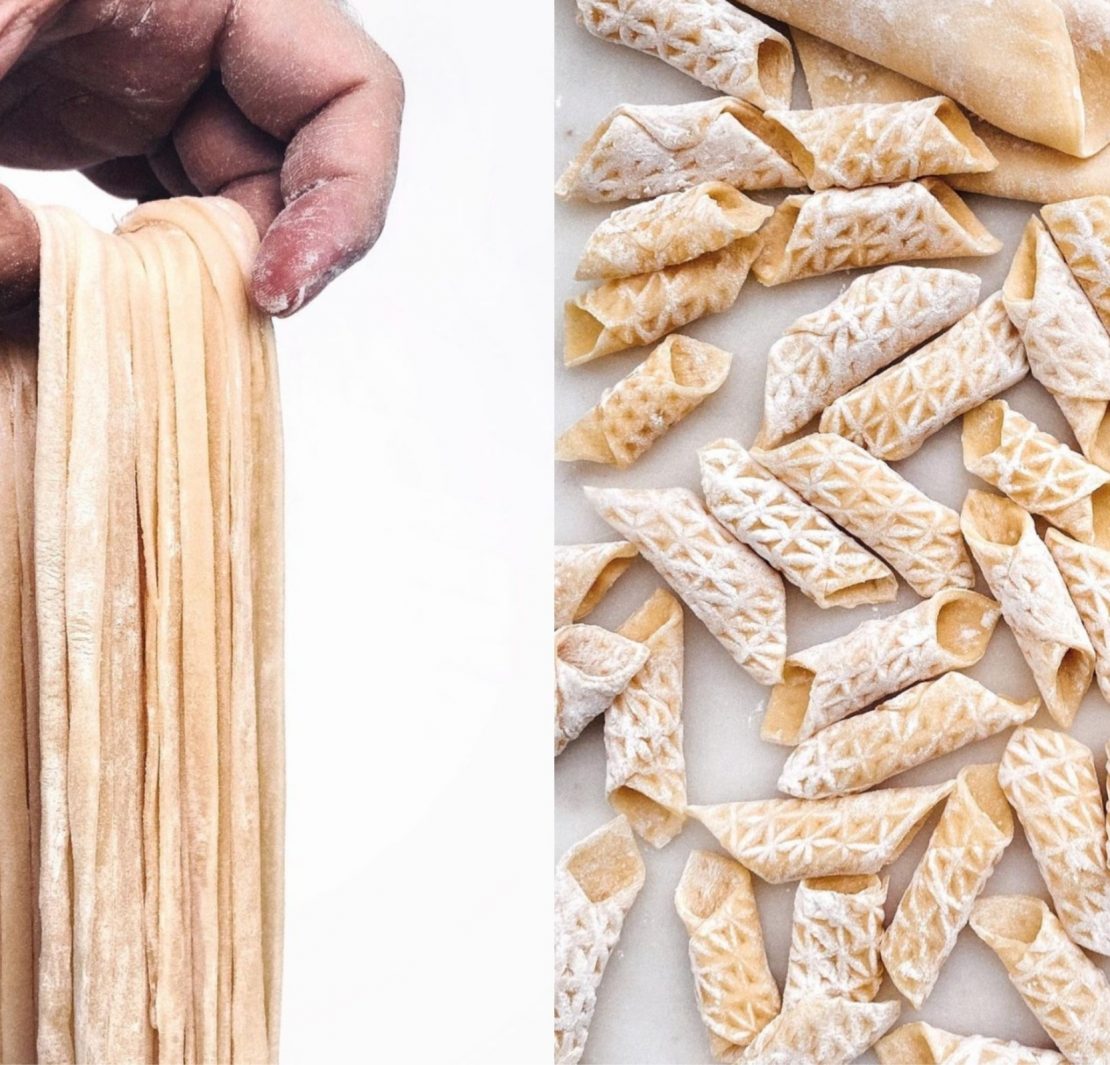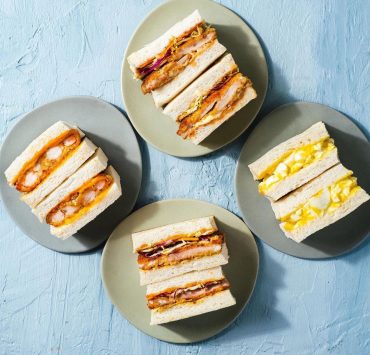If you have been watching Pasta Grannies on YouTube, this one’s for you. (For the uninitiated, Pasta Grannies is a video series where Italian elders make their specialty pasta at home, often from scratch with their bare hands and some old school equipment. No mixers here, not even a pasta maker.)
The joys of making your own pasta are immense. But so is watching someone making it. (Check out chef Matt Zielonka on Instagram for seamless pasta-making videos). It’s like playing with Play-Doh as adults but still being able to eat your creation after. Unlike making bread, this is more beginner-friendly, though if you want to go full-on Italian nonna sans pasta machine, you might need some muscle here.
Fresh pasta also lends itself to many dishes and pasta shapes as it is malleable enough unlike dry ones.
In the latest episode of our IGTV video series Homemade, home baker Mano Japitana shows us how he makes his own pasta using the versatile and ubiquitous all-purpose flour. Of course, you can opt to use 00 flour for a finer finish or even semolina and skip the eggs altogether. But for this very beginner-friendly lesson, we’ll stick with something you are more likely to have in your pantry.
Mano will teach us how to make six basic pasta shapes from a fresh dough, each can be cooked differently to your liking and with any sauce you find suitable.
Ingredients
- 2 cups all purpose flour
- 3 large eggs
- 1 tsp salt
- 1 tbsp olive oil
Materials
- Fork
- Bench scraper
- Pasta machine
- Pasta boards
- Cheese grater
- Pasta cutters
- Knife
How make a basic pasta dough
You can pull out your trusty stand mixer here, but for the full nonna experience, as Mano suggests, you may also mix the ingredients on a clean countertop. Start with your dry ingredients (flour and salt) and make a well in the middle of your mound with your hands or with the bottom of a bowl. That’s where you will pour in the wet ingredients (eggs and olive oil).

To start, you need to slowly incorporate the dry ingredients into the wet ones using a fork without breaking the wall. Otherwise, the egg mixture will escape and cause a kitchen mess. As you do this, a rough dough will form. It will get harder to mix, and this is where a bench scraper comes in handy. Form a unified mass and knead it for 10 minutes until it forms a smooth ball. Cover the resulting dough with cling film and let it rest of 30 to 45 minutes.
When it is ready, just flour your working surface so it doesn’t stick, then divide the dough into portions. Dust these portions with more flour and make sure to cover them when they are not in use so they don’t dry out.
How to make pasta sheets
This process is a whole lot easier with a pasta machine, but it is also possible to make it with your bare hands with a little help from a rolling pin.
Feed a portion of the dough that has been flattened to a pasta machine and pass it through the thickest setting first. Work your way through, repeating the process until you reach the thinnest or second-to-the-last setting in your pasta roller.
Mano also suggests embedding fresh herbs and edible flowers into your pasta to make it more visually appealing and to add more flavor.
[READ: Floral pasta, butter rolls and other edible flower delights for delivery]Pasta sheets can be used to make a layered lasagna dish or to create other interesting shapes, from the very familiar long and thin spaghetti to something more complex like the following shapes.
How to make cavatelli
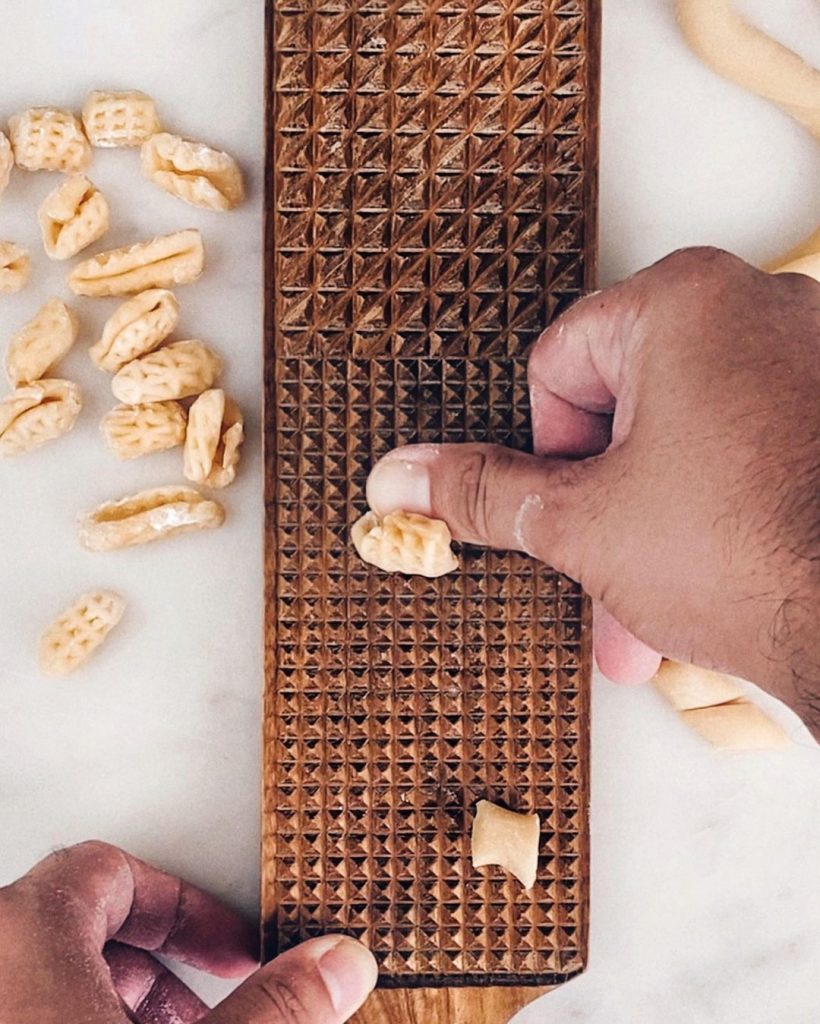
Even without a pasta roller, you can still make interesting pasta shapes with your hands and—believe it or not—a cheese grater. You can make cavatelli or small hand-rolled pasta shells just by rolling your dough into a log then cutting it into small pieces. Using your thumb, just roll one piece onto the back of a cheese grater or on a pasta board, to create interesting patterns.
Cavatelli is good for simple sauces or even our very own sopas, as its hollow part can scoop up sauces and soups very well.
How to make garganelli
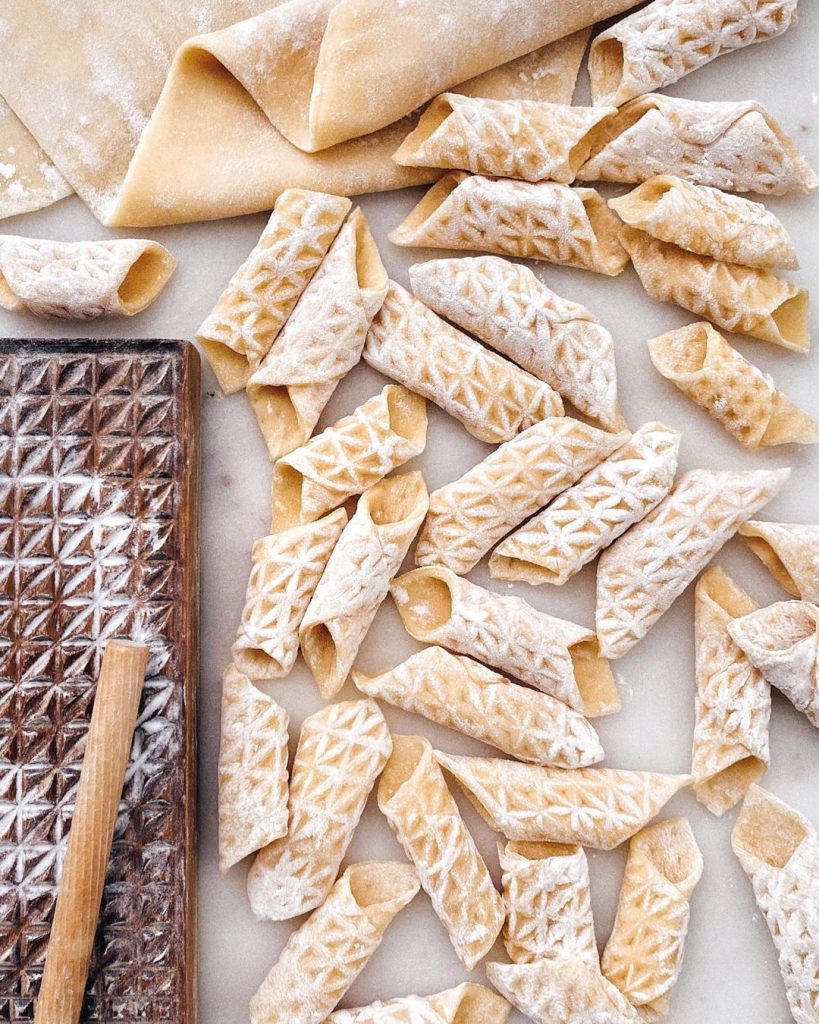
Garganelli are tube-like pasta that come in either smooth or ridged versions, which tend to catch more sauce, take note of that! Start by cutting your pasta sheets into squares using a pasta cutter. Lay a single square into a ridged pasta board with one corner facing you like a diamond. Take one corner and fold it into a cylindrical wooden stick then roll forward while pressing lightly into the board until you create a tube.
How to make tagliatelle
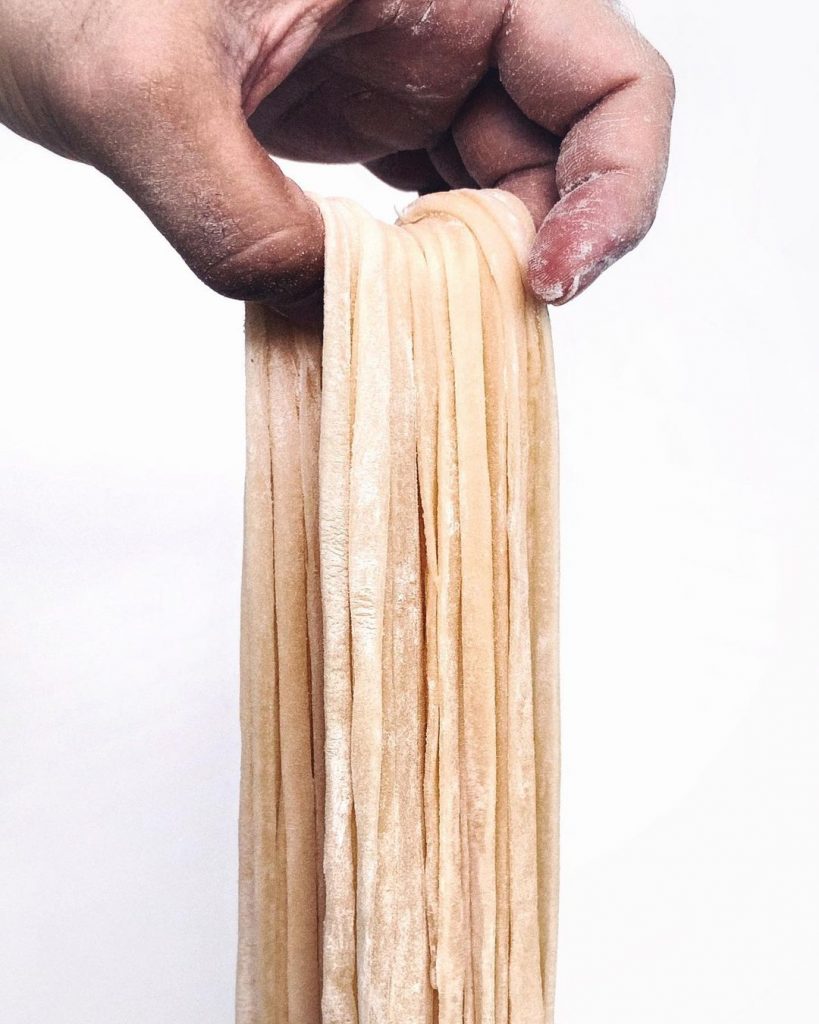
Similar to fettuccine, tagliatelle are fat long ribbons that can be made with a pasta maker or even by hand with a knife. To make it by hand, just take a long pasta sheet and roll it in from both ends until you have two rolls in the middle. Using a knife, cut it into 6.5 to 10 mm strips. Loosen up the strips and dust with flour.
How to make farfalle
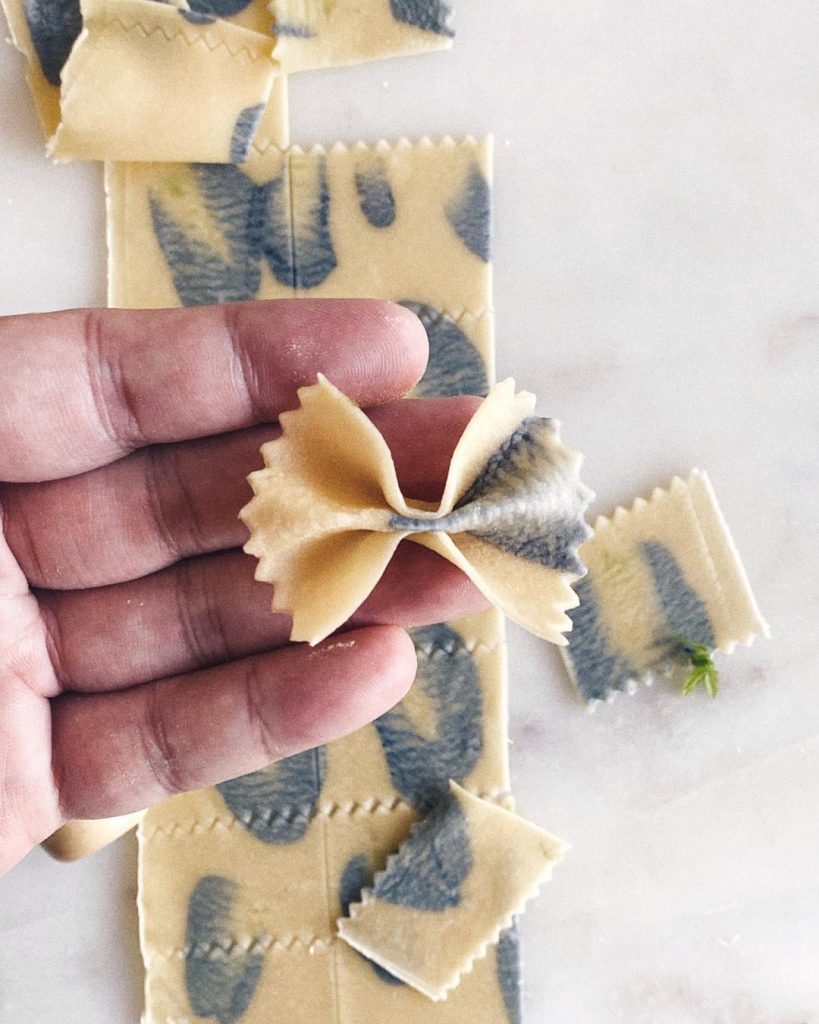
You might be familiar with this pasta shape that resembles a bowtie. To make its specifically fluted edges, you will need a fluted-edged pasta cutter to make its square base from pasta sheets. Fold a piece from the center, taking the top and bottom part and pinching it to create a cinch in the middle that will make the fluted edges even more pronounced. Farfalle has enough surface area to ensure that all pieces get coated with sauce.
How to make barchette
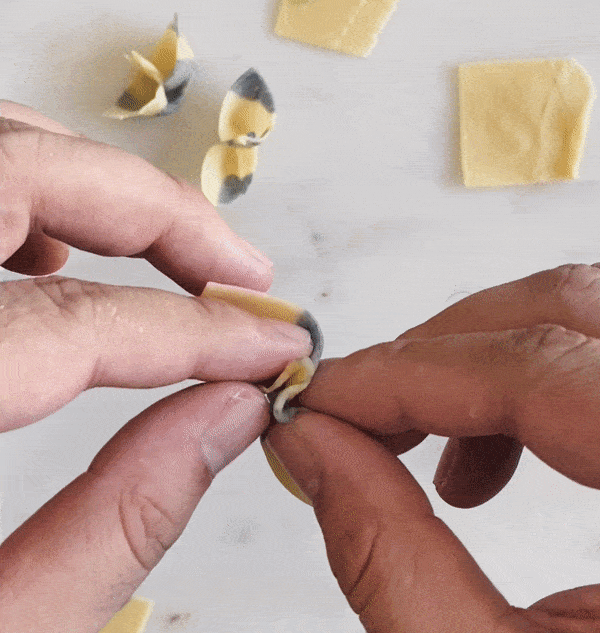
This is perhaps the most intricate in this bunch and the most unfamiliar to us. Barchette, which literally means small boats, are made by folding a square piece of pasta sheet diagonally and pinching two opposite ends together. This creates two separate pouches on each end that can literally scoop up sauce.
Cooking fresh pasta
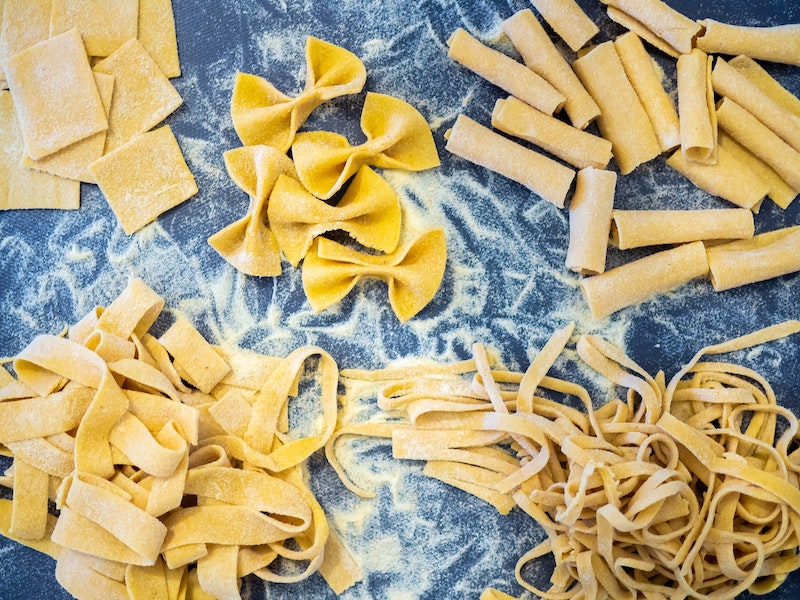
According to chef and writer Samin Nosrat, fresh pasta must be cooked through unlike dried pasta, which should never be cooked past al dente.
Fresh pasta cooks quickly at around three to four minutes. Mano recommends letting your newly shaped pasta rest for about 30 minutes after dusting before you cook it. This allows them enough time to solidify so they don’t end up breaking during the process of boiling.
Throw them in your favorite sauce and voila! Breakfast, lunch or dinner is served!


